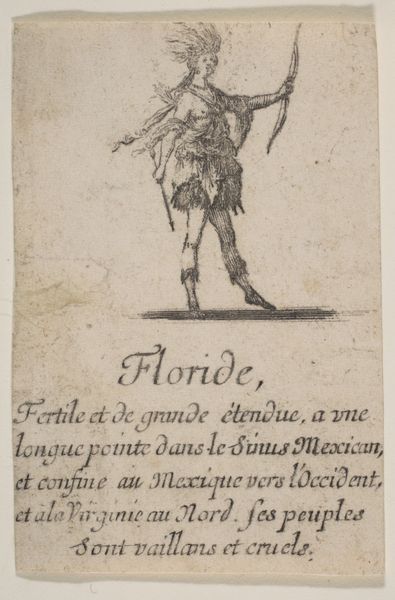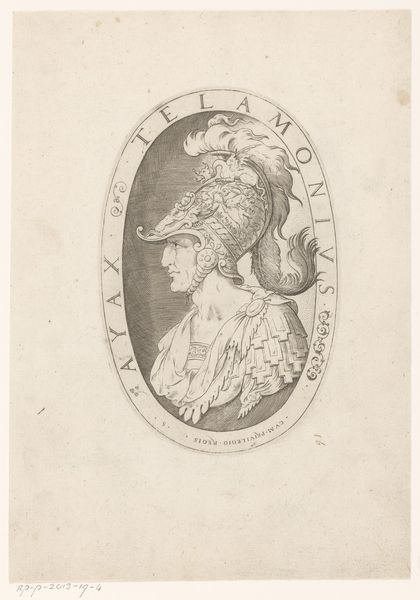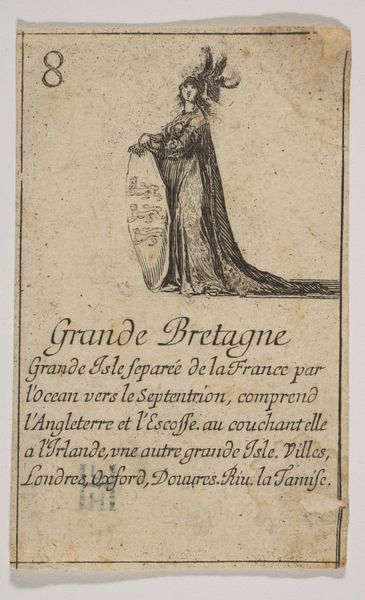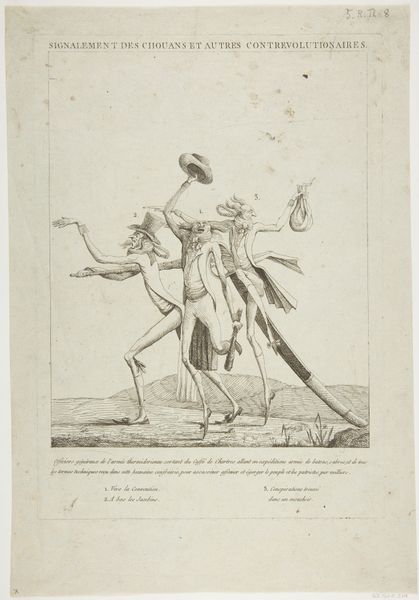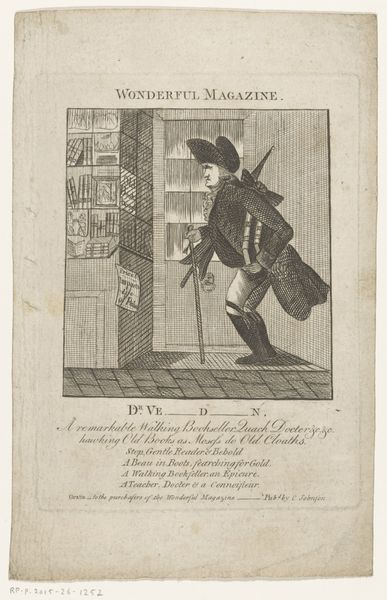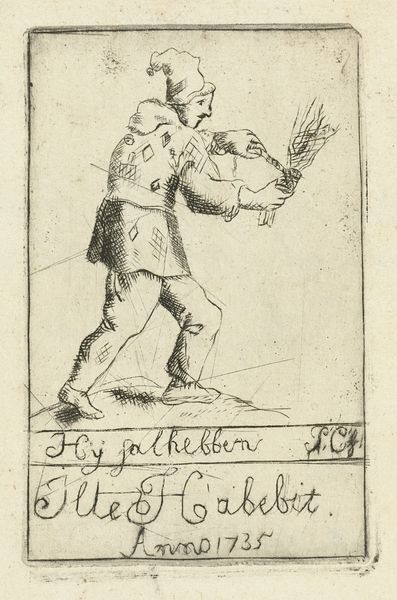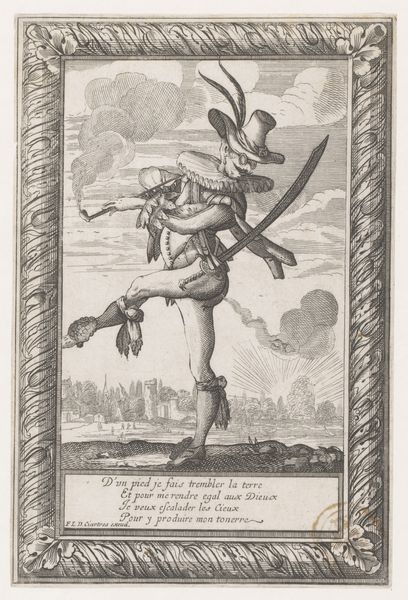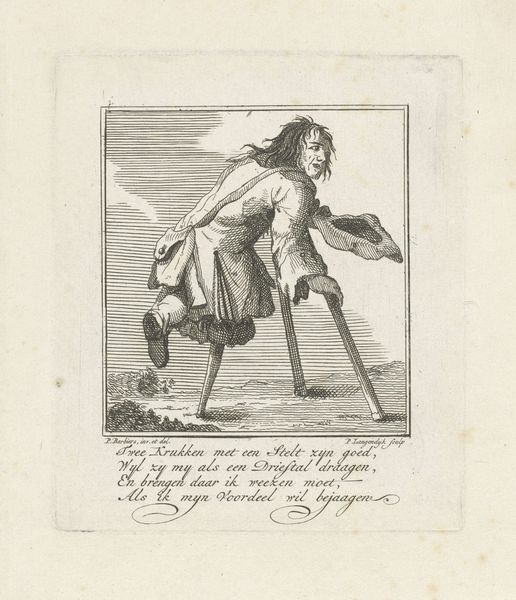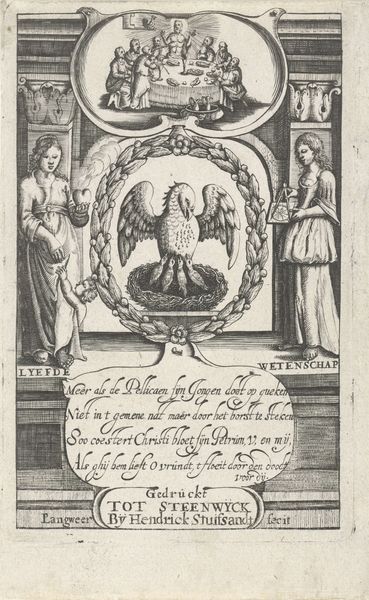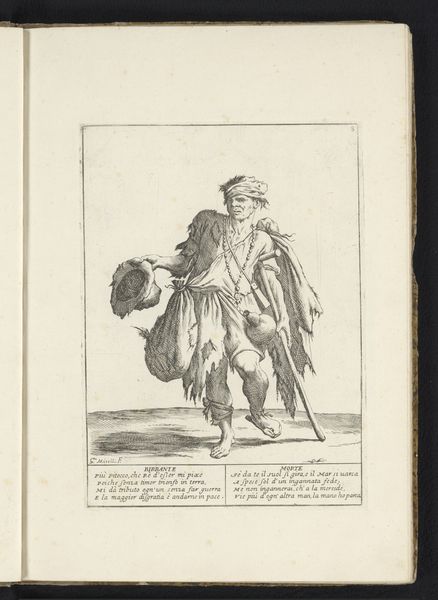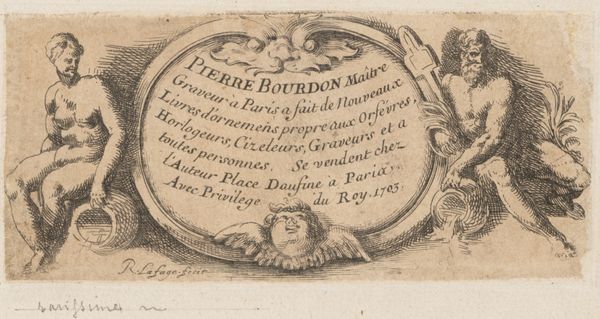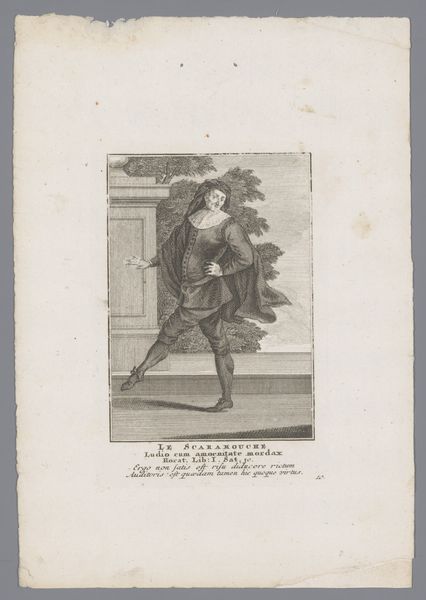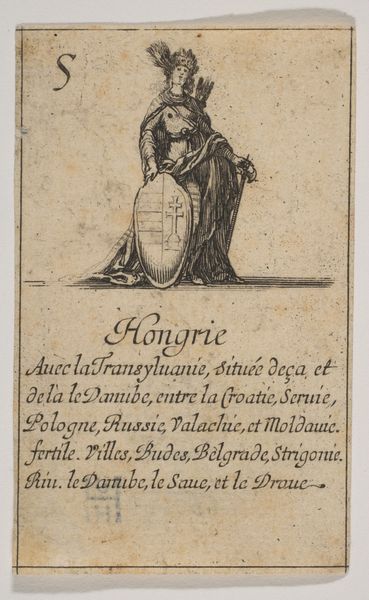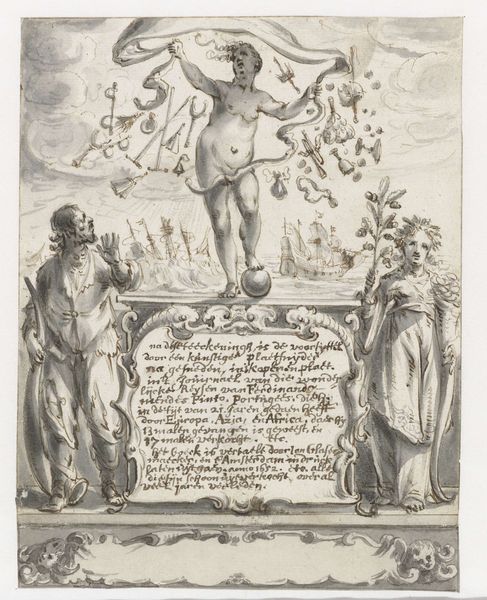
Brésil, from the playing cards "Jeu de la Géographie" 1644
0:00
0:00
drawing, print, etching
#
portrait
#
drawing
# print
#
etching
#
orientalism
#
history-painting
Copyright: Public Domain
Curator: Stefano della Bella, a Florentine printmaker, created this etching entitled "Brésil" around 1644, as part of a playing card series called "Jeu de la Géographie." Editor: It's striking, really. This figure seems almost weighed down by their elaborate costume, especially in contrast with what looks like fairly crude cross-hatching work. It makes the figure look primitive. Curator: The “primitive” aesthetic you observe must be seen through the lens of 17th-century European perspectives. These cards presented a view of the world as understood, and often misunderstood, by Europeans at the time, framing concepts of "the other," and very heavily influenced by the orientalist narratives in vogue then. Editor: Right, right. And what materials were being used, and where? This seems a world away from marble sculpture in terms of social function, obviously designed to be replicated in large numbers, printed perhaps on cheap stock for rapid consumption, more like a modern broadsheet or newspaper cartoon. Curator: Absolutely. Printmaking was burgeoning then and offered a different kind of artistic labor from the workshop-bound artisanal production of, say, painting. Della Bella was one of many who saw how print media could disseminate imagery, though often those images solidified skewed concepts about race and place. Note the exoticized depiction of an indigenous Brazilian. It embodies a common trope. Editor: The figure holds what appear to be cotton bolls, maybe? I wonder if that detail points towards an understanding, or at least an awareness, of the colonial exploitation already underway. The means of portraying and categorizing the world were integral to that whole process. Curator: Precisely! It highlights the card's engagement with themes of trade, resource extraction, and colonial dominance. This simple playing card actually becomes a crucial artifact for analyzing the social and economic implications of 17th-century European expansionism. Editor: Well, seeing the image as a piece of a broader commercial venture reveals some troubling undercurrents—reminding us how intertwined culture and power can be, and maybe still are. Curator: Indeed. These cards, seemingly innocuous, offer us a space to challenge, as you suggested, that complicated past as well as prompt discussions about enduring inequities in the world.
Comments
No comments
Be the first to comment and join the conversation on the ultimate creative platform.
